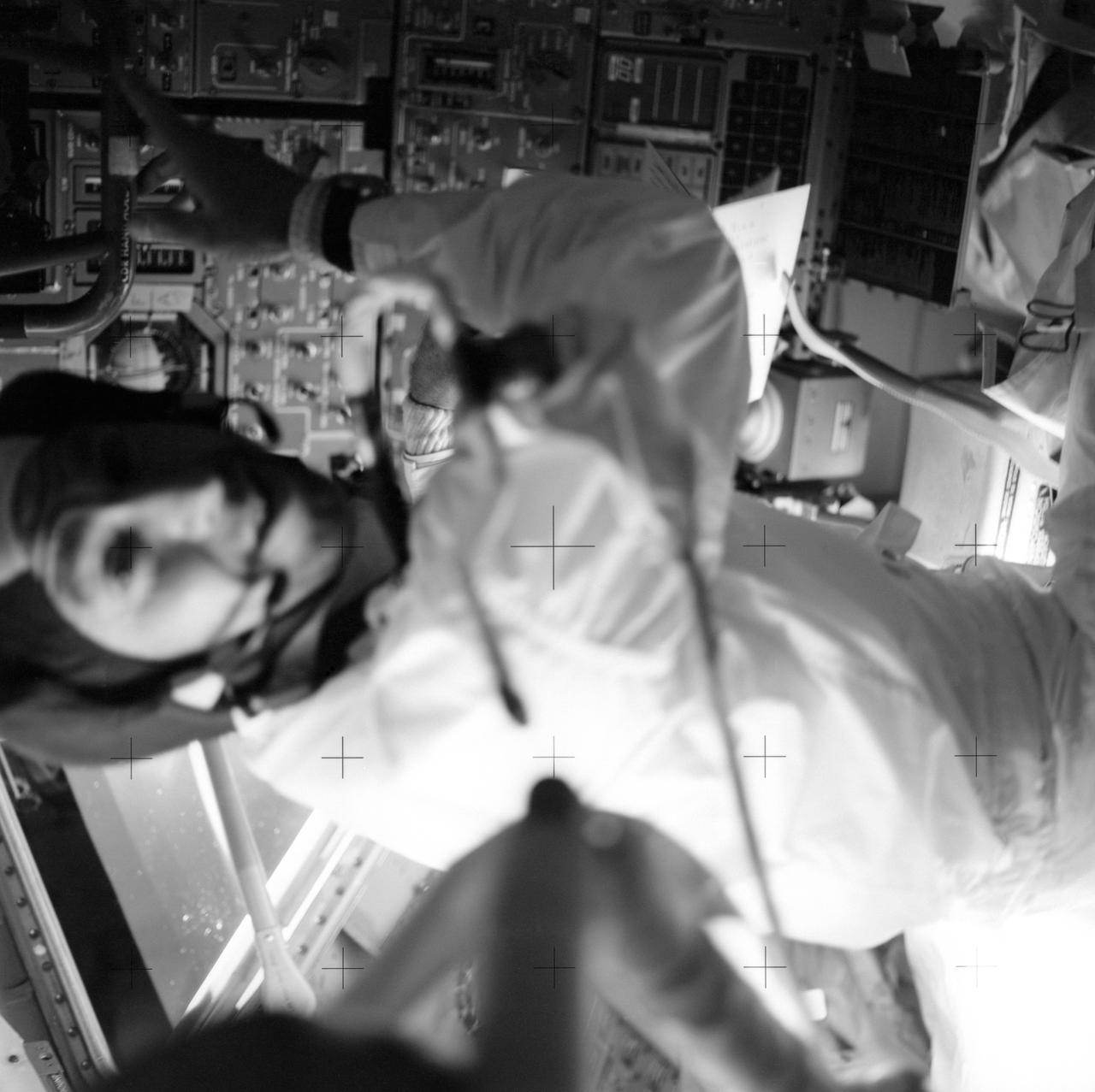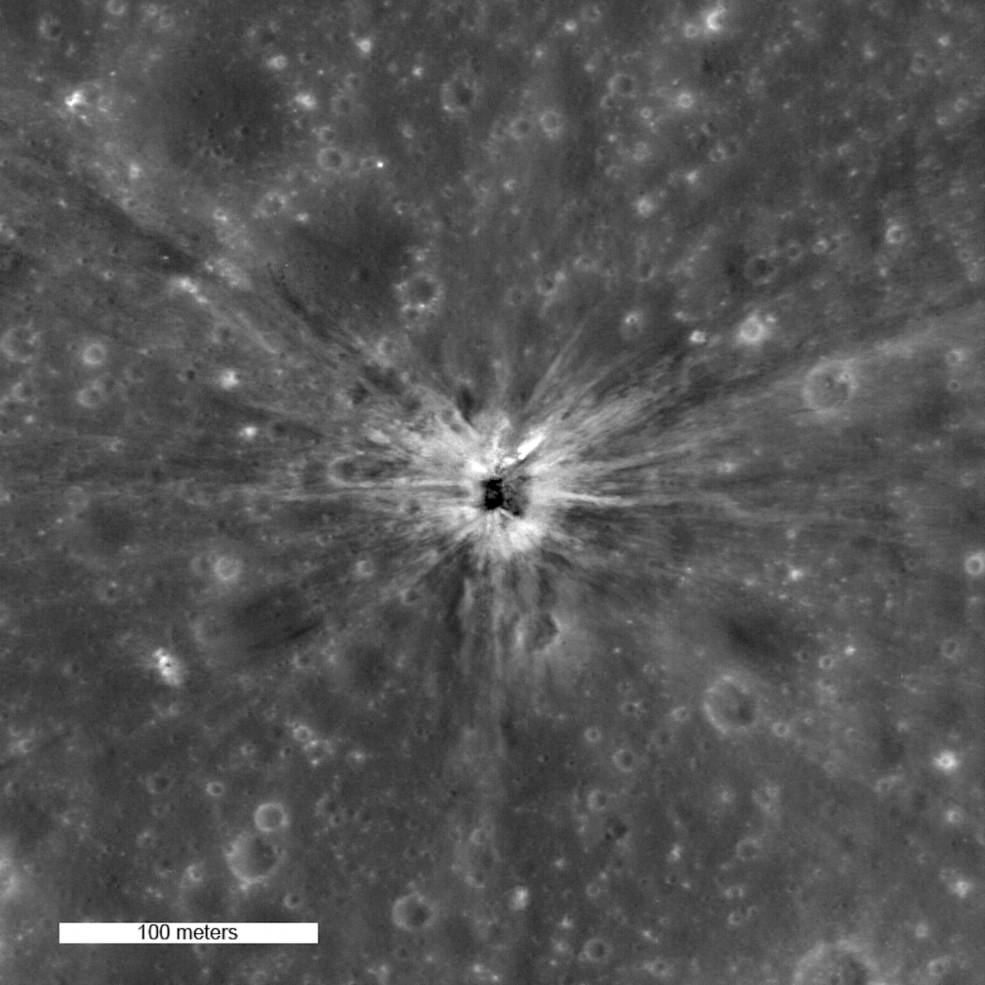'At least something worked': Watch Apollo 13's crew hail a rocket crash on the moon
After piloting a crippled spacecraft around the far side of the moon, the crew of NASA's stricken Apollo 13 received a rare bit of good news on April 14, 1970. It turns out, they'd made a moonquake.
A new video of Apollo 13's flight, NASA has pieced together synchronized video, audio and imagery to chronicle the moment when Mission Control radioed the success of the mission's seismic experiment. That experiment, which crashed an upper stage booster from Apollo 13's Saturn V rocket into the moon, was detected by a seismometer delivered to the lunar surface months earlier by the Apollo 12 crew.
"Looks like your booster just hit the moon, and it's rocking it a little bit," capsule communicator Vance Brand told the Apollo 13 crew from NASA's Mission Control in Houston in the video, which was released by NASA's Goddard Space Flight Center in Maryland. He was referring to data gathered by Apollo 12's seismometer 85 miles (136 kilometers) from the crash site.
Related: Apollo 13's Jim Lovell and Fred Haise on their mission 50 years later

Apollo 13 mission commander Jim Lovell, who a day earlier had seen his Odyssey command module spacecraft suffer the effects of an explosion in the service module that ripped away vital connections for power and breathing air, laconically responded from a distance of roughly 200,000 miles (322,000 km) from NASA.
"Well, at least something worked on this flight," said Lovell, who was fighting for survival alongside crewmates Fred Haise and Jack Swigert while dealing with the realization that his long-planned moon landing would never come to be.
In NASA's new video, Brand begins to speak again, but stops when he hears a second transmission coming from the three-astronaut crew. At the time, Lovell, Haise and Swigert were using their lunar lander — the Aquarius lunar module (LM) — as a lifeboat to return to Earth since their command module was disabled.
Get the Space.com Newsletter
Breaking space news, the latest updates on rocket launches, skywatching events and more!
"Go ahead," Brand said.
"I say, I'm sure glad we didn't have a LM impact, too," joked Haise.
Brand paused, then drawled out his response: "Right."

The worldwide rescue effort to bring home the astronauts succeeded days later, when Odyssey splashed down successfully in the Pacific Ocean on April 17, 1970. All three astronauts emerged in relatively good health, given they had spent much of the past week in cold conditions with little water available.
Lovell is now 92 years old and Haise 86, although Swigert died of cancer in 1982. Decades after the perilous flight, Lovell and journalist Jeffrey Kluger wrote a book about the mission, originally titled "Lost Moon," that inspired the popular 1995 Hollywood film, "Apollo 13."
Seismometers placed by most of the Apollo landing crews allowed scientists to learn more about the structure of the moon, including monitoring moonquakes and examining seismograph waves when Saturn V rocket stages were deliberately thrown onto the surface. That said, nobody knew exactly where on the moon Apollo 13's S-IVB upper stage left its mark until 2010, when high-definition imagery from the Lunar Reconnaissance Orbiter revealed the crater left behind.
While the crew's reaction to the impact has been available in transcripts for decades, the audio lay dormant in the National Archives and Records Administration since NASA donated it to the institution in 1970, Goddard said in the same statement. Audio equipment available at the facility could not play the footage, which necessitated a new rescue effort 45 years after the mission.
In 2015, the National Science Foundation funded work to refurbish audio equipment at Johnson Space Center that could play the footage, allowing for 7,200 hours of Apollo 13 audio to be digitized. The audio was then released publicly in 2020 on ApolloInRealTime.org.
The usual anniversary celebrations for an Apollo milestone are not taking place this week, due to restrictions put in place to address the spread of novel coronavirus. That said, NASA and other entities do have Apollo 13 multimedia and other resources available online, including a new NASA documentary.
- This vintage NASA Apollo 13 documentary takes you back to the iconic moon mission
- Failure was not an option: NASA's Apollo 13 mission of survival in pictures
- 50 years after Apollo 13, we can now see the moon as the astronauts did
Follow Elizabeth Howell on Twitter @howellspace. Follow us on Twitter @Spacedotcom and on Facebook.
OFFER: Save 45% on 'All About Space' 'How it Works' and 'All About History'!
For a limited time, you can take out a digital subscription to any of our best-selling science magazines for just $2.38 per month, or 45% off the standard price for the first three months.
Join our Space Forums to keep talking space on the latest missions, night sky and more! And if you have a news tip, correction or comment, let us know at: community@space.com.

Elizabeth Howell (she/her), Ph.D., was a staff writer in the spaceflight channel between 2022 and 2024 specializing in Canadian space news. She was contributing writer for Space.com for 10 years from 2012 to 2024. Elizabeth's reporting includes multiple exclusives with the White House, leading world coverage about a lost-and-found space tomato on the International Space Station, witnessing five human spaceflight launches on two continents, flying parabolic, working inside a spacesuit, and participating in a simulated Mars mission. Her latest book, "Why Am I Taller?" (ECW Press, 2022) is co-written with astronaut Dave Williams.










